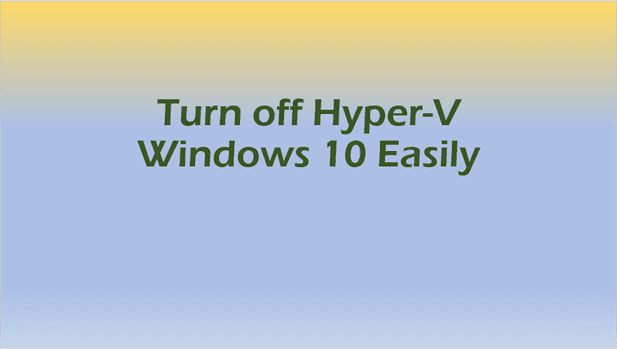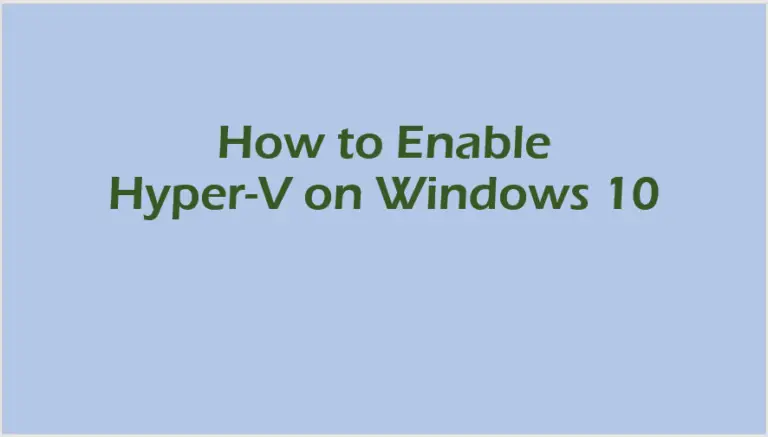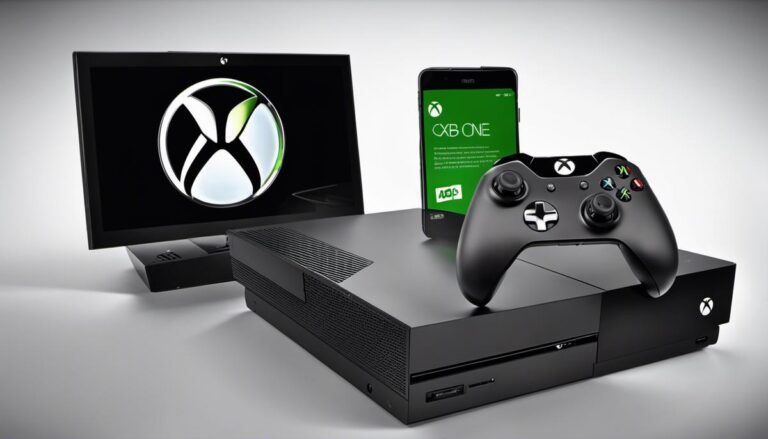Turn off Hyper V Windows 10: The Ultimate Guide
Learn how to turn off Hyper V Windows 10 with our step-by-step guide. Boost performance and resolve conflicts with other virtualization software easily.
Hyper-V is a powerful virtualization technology built into Windows 10, but there are times when you might need to disable it. Whether you’re experiencing conflicts with other virtualization software or simply want to free up system resources, this guide will walk you through the process of turning off Hyper-V in Windows 10.
What is Hyper-V?
Before we dive into disabling Hyper-V, let’s briefly discuss what it is and why you might want to turn it off.
Hyper-V is Microsoft’s hardware virtualization product that allows you to create and run virtual machines on Windows. It’s a useful tool for developers, IT professionals, and power users who need to run multiple operating systems on a single physical machine.
However, Hyper-V can sometimes conflict with other virtualization software like VirtualBox or VMware Workstation. Additionally, it uses system resources even when not actively running virtual machines, which might impact performance on lower-end systems.
Why Turn off Hyper-V?
There are several reasons you might want to disable Hyper-V:
- Compatibility: Other virtualization software doesn’t work well with Hyper-V enabled.
- Performance: You want to free up system resources for other tasks.
- Troubleshooting: You’re experiencing issues that might be related to Hyper-V.
- Testing: You need to temporarily disable Hyper-V for specific applications or scenarios.
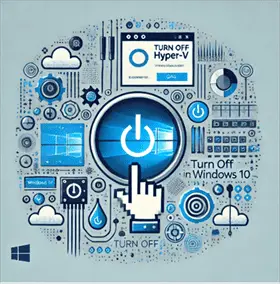
Methods to Turn off Hyper V Windows 10
Let’s explore multiple methods to disable Hyper-V, starting with the easiest and most common approach.
Method 1: Using Windows Features
This is the most straightforward method to turn off Hyper-V:
- Press the Windows key and type “Turn Windows features on or off”.
- Click on the matching control panel option.
- In the Windows Features dialog, scroll down to find “Hyper-V”.
- Uncheck the box next to Hyper-V to deselect it and all its components.
- Click “OK” to apply the changes.
- Restart your computer when prompted.
Method 2: Using PowerShell
For those who prefer using the command line:
- Open PowerShell as an administrator.
- Run the following command:
Disable-WindowsOptionalFeature -Online -FeatureName Microsoft-Hyper-V-All
Disable-WindowsOptionalFeature -Online -FeatureName Microsoft-Hyper-V-All
- Restart your computer when prompted.
Method 3: Using the Command Prompt
Similar to PowerShell, you can use the Command Prompt:
- Open Command Prompt as an administrator.
- Run the following command:
dism.exe /Online /Disable-Feature:Microsoft-Hyper-V-All
dism.exe /Online /Disable-Feature:Microsoft-Hyper-V-All
- Restart your computer when prompted.
Method 4: Using Group Policy
For Windows 10 Pro or Enterprise users:
- Press Windows + R, type “gpedit.msc”, and press Enter.
- Navigate to Local Computer Policy > Computer Configuration > Administrative Templates > System > Device Guard.
- Double-click on “Turn On Virtualization Based Security”.
- Select “Disabled” and click “OK”.
- Restart your computer.
Method 5: BIOS/UEFI Settings
In some cases, you might need to disable virtualization at the BIOS level:
- Restart your computer and enter BIOS/UEFI settings (usually by pressing F2, Del, or Esc during startup).
- Look for virtualization options (may be called VT-x, AMD-V, or similar).
- Disable the virtualization option.
- Save changes and exit BIOS.
Verifying Hyper-V is Disabled
After using one of the above methods, you should verify that Hyper-V is indeed turned off:
- Open Command Prompt as an administrator.
- Run the following command:
systeminfo
systeminfo
- Look for the “Hyper-V Requirements” section. If Hyper-V is disabled, all entries should show as “No”.
Re-enabling Hyper-V
If you need to turn Hyper-V back on in the future, you can use the same methods described above, but reverse the process. For example:
- In Windows Features, check the box next to Hyper-V.
- In PowerShell, use
Enable-WindowsOptionalFeature -Online -FeatureName Microsoft-Hyper-V-All. - In Command Prompt, use
dism.exe /Online /Enable-Feature:Microsoft-Hyper-V-All.
Troubleshooting Common Issues – Turn off Hyper V Windows 10
Issue 1: Unable to disable Hyper-V
If you’re having trouble turning off Hyper-V, try the following:
- Ensure you’re logged in as an administrator.
- Check for pending Windows updates and install them.
- Use the PowerShell or Command Prompt method if the GUI method fails.
Issue 2: Other virtualization software still not working
If you’ve disabled Hyper-V but still can’t use other virtualization software:
- Check if Windows Sandbox or Windows Subsystem for Linux (WSL) are enabled, as they also use Hyper-V features.
- Disable Core Isolation Memory Integrity in Windows Security settings.
- Ensure virtualization is enabled in your BIOS/UEFI settings.
Issue 3: Performance issues after disabling Hyper-V
If you’re experiencing performance problems after turning off Hyper-V:
- Restart your computer if you haven’t already.
- Check for other resource-intensive processes in Task Manager.
- Update your device drivers, especially for your CPU and chipset.
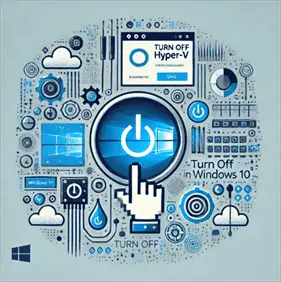
Alternatives to Hyper-V
If you’re disabling Hyper-V but still need virtualization capabilities, consider these alternatives:
- VirtualBox: A free, open-source virtualization solution that works on multiple platforms.
- VMware Workstation Player: A free virtualization product for personal use, with a paid Pro version for commercial use.
- QEMU: An open-source machine emulator and virtualizer, popular among developers and advanced users.
Impact on Windows Features
Turning off Hyper-V may affect some Windows features that rely on it:
- Windows Sandbox
- Windows Subsystem for Linux 2 (WSL 2)
- Windows Defender Application Guard
- Device Guard and Credential Guard
If you use any of these features, you may need to keep Hyper-V enabled or find alternative solutions.
Best Practices
When managing Hyper-V on your Windows 10 system:
- Always create a system restore point before making changes.
- Keep your Windows 10 installation up to date.
- Regularly check for driver updates, especially after enabling or disabling Hyper-V.
- Document your changes for future reference.
Key Takeaways
- Hyper-V is a powerful virtualization tool in Windows 10, but it can conflict with other virtualization software.
- There are multiple methods to disable Hyper-V, including using Windows Features, PowerShell, and Command Prompt.
- Always verify that Hyper-V is fully disabled after making changes.
- Disabling Hyper-V may affect other Windows features that rely on virtualization.
- Consider alternatives like VirtualBox or VMware if you still need virtualization capabilities.
FAQ
- Q: Will turning off Hyper-V delete my virtual machines? A: No, disabling Hyper-V will not delete your VMs, but you won’t be able to use them until Hyper-V is re-enabled.
- Q: Can I use VirtualBox and Hyper-V at the same time? A: Generally, no. It’s recommended to disable Hyper-V if you want to use VirtualBox or other virtualization software.
- Q: Do I need to disable Hyper-V to run VMware Workstation? A: Yes, VMware Workstation typically requires Hyper-V to be disabled for optimal performance.
- Q: Will disabling Hyper-V improve my system performance? A: It may free up some system resources, but the impact will vary depending on your hardware and usage.
- Q: Can I disable Hyper-V on Windows 10 Home edition? A: Hyper-V is not available on Windows 10 Home, so there’s no need to disable it.
- Q: How do I know if Hyper-V is currently enabled on my system? A: You can check in Windows Features, or use the
systeminfocommand in Command Prompt. - Q: Will disabling Hyper-V affect my ability to run Docker on Windows? A: Yes, Docker for Windows relies on Hyper-V. You may need to switch to Docker Toolbox if you disable Hyper-V.
- Q: Can I re-enable Hyper-V after disabling it? A: Yes, you can re-enable Hyper-V at any time using the same methods used to disable it.
- Q: Does disabling Hyper-V require a system restart? A: Yes, you’ll need to restart your computer for the changes to take effect.
- Q: Is it safe to disable Hyper-V? A: Yes, it’s safe to disable Hyper-V. However, ensure you’re not actively using any features that depend on it.
By following this guide, you should now be able to confidently turn off Hyper-V in Windows 10 when needed. Remember to consider the impact on other Windows features and always have a plan for re-enabling Hyper-V if required in the future.
Related Posts: Hyper V on Windows 10
Virtualization applications don’t work together with Hyper-V, Device Guard, and Credential Guard
